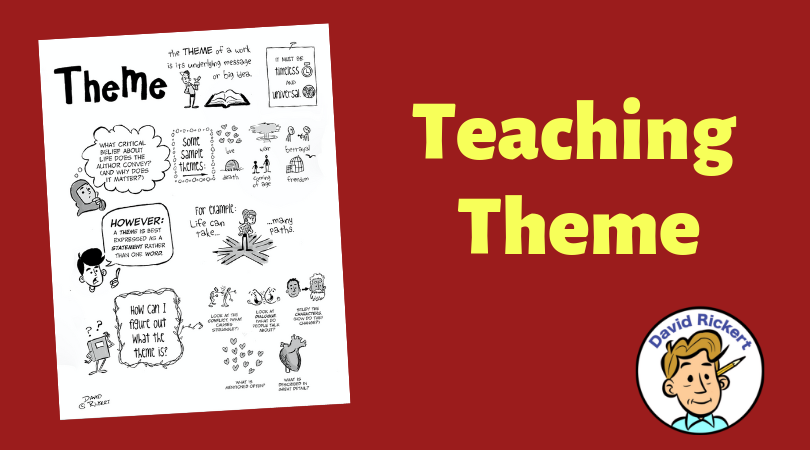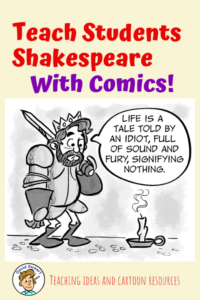
Theme. It’s one of the most difficult topics to teach students in language arts classes. And theme is never something they master. They have to work hard to get better at it every year.
But is a theme a word, or a sentence?
The goal of close reading and annotating is to arrive at a theme. Most ELA teachers I know will say that a theme is a sentence. Certainly if you say that the theme of a story is “love” you won’t be able to say anything substantial about it. You need to say something more specific, which is best done in a sentence: “Forbidden love can have terrible consequences.” NOW we’re ready to write or discuss theme.
However, my answer is this: it depends.
It depends on whether we’re talking about universal themes or the theme of a poem, short story, or novel. “Forbidden love can have terrible consequences” is a good theme, but it’s not the ONLY way that people write about love in stories.
Plus, it’s worth considering the way that other organizations use the word theme. CommonLit and Writer’s Edit and Shmoop all use themes that are one word, like “love,” “war,” and “death,” or a phrase at best. Plus, if I have a book of Emily Dickinson poems grouped by theme, you can bet I’ll see a category called “nature.” Emily Dickinson wrote a lot about nature, but she didn’t always say the same thing about nature in every poem. I know that it’s possible to see these as “topics” (a term a lot of teachers use) but if we are being truly descriptive, this is how the word theme is used in lots of places.


Here’s my approach.
I find it helpful to acknowledge the way that a lot of my students will see theme expressed frequently, which is with a single word. However, I tell them that theme is best expressed as a statement, which would be a sentence that the author expresses about a topic. So we can distinguish between what topics the work addresses (love, injuries, friendship) into what the author says about those topics (which would be the theme.)
I find children’s books to be a terrific way to teach theme. It’s helpful to pick one that has a clear purpose in mind. My current favorite is Chopsticks, by Amy Rosenthal. We read the story, discuss the topics that Rosenthal addressed in the story, and then work from there to arrive at themes: what does Rosenthal believe about these topics?
A Visual Guide to Theme
Visual guides help students understand complex topics, and I’ve developed this Visual Guide To Theme to help students understand how theme works. Also included: plenty of teaching tips for helping students understand theme that have worked in my classroom.


I know you’re the kind of teacher that makes their classroom a fun, engaging learning environment. I have a series of lessons done as comics that address various ELA topics like grammar, poetry, editing, and Shakespeare, all of which will make your students glad they came to class that day. All the fun is there for you, and your kids will love studying any of these topics because they’ll get a new comic every day! Please check out my resources and let the learning begin!




